In the ever-evolving world of pet care, cat litter has become an essential item for feline-friendly households. It's not just about keeping your space clean; it's about understanding the diverse array of options available to suit different needs. From traditional clumping clay to eco-friendly alternatives like recycled paper, wood pellets, and even tofu-based litter, the choices can be overwhelming.
Navigating a cat's litter landscape requires a balance of practicality, sustainability, and, most importantly, catering to the whims of our feline overlords. After all, in the world of cat care, their comfort reigns supreme. In this post, we will share the different types of cat litter available on the market, along with their pros and cons. Each type of litter reflects the diverse needs of today's cat owners, ensuring that the purr-fect match is just a scoop away.
Types of Cat Litter
Clumping Clay Litter
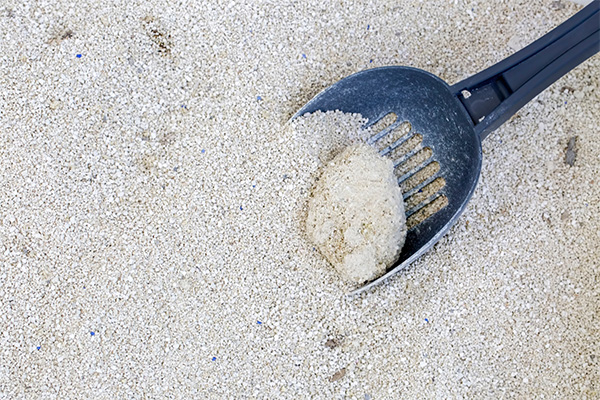
Clumping clay litter, predominantly made from bentonite clay, is favored for its ability to form solid clumps upon contact with moisture, simplifying the cleaning process. This feature allows for easy waste removal, contributing to better odor control and a cleaner litter box environment. The clumping action ensures that only the soiled litter is discarded, leading to less frequent replacements and potential cost savings. However, it's typically heavier than other types of litter and can produce dust, which may concern cats with respiratory issues. Additionally, it's not biodegradable, posing environmental concerns for eco-conscious cat owners.
Non-Clumping Clay Litter
Non-clumping clay litter, primarily composed of minerals like zeolite, diatomite, and sepiolite, is designed to absorb urine without forming clumps. This type of non-clumping litter is typically more affordable than its clumping counterpart, making it a budget-friendly option for cat owners. It's effective in controlling odors and is relatively easy to use, requiring a complete change rather than regular scooping of clumps. However, the lack of clumping means more frequent litter box changes are necessary to maintain cleanliness. Non-clumping clay litter can also be dusty, which may be an issue for cats or owners with respiratory sensitivities. Moreover, it's not biodegradable, raising environmental concerns.
Silica Gel Litter
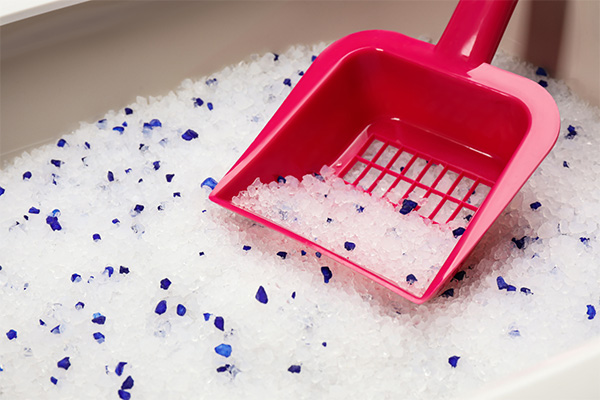
Silica gel litter, comprising silica beads or crystals, distinguishes itself with exceptional absorbency and efficient odor control. Thanks to its elevated moisture absorption rate, it outlasts conventional clay litters, proving a financially prudent choice over time. Additionally, this type of litter is characterized by minimal dust and a lightweight nature, offering advantages for cats and owners with respiratory sensitivities. The clear crystals can also make it easier to monitor the health of your cat's urinary system. However, its higher initial cost compared to clay litters can be a drawback for some. Additionally, the texture of silica beads might not be preferred by all cats, and it's not biodegradable, posing environmental concerns.
Recycled Paper Litter
Recycled paper litter, crafted from repurposed paper products, presents an eco-friendly solution for cat owners. It's highly absorbent and soft, making it a gentle option for cats with sensitive paws or post-surgery needs. Generally, this variety of litter is dust-free, presenting benefits for feline companions and owners dealing with respiratory concerns. As a biodegradable option, it appeals to environmentally conscious consumers. However, recycled paper litter generally doesn't clump, making waste removal less convenient than clumping clay litter. Odor control can be less effective in some brands, and frequent litter changes might be necessary to maintain cleanliness and hygiene.
Wood Litter
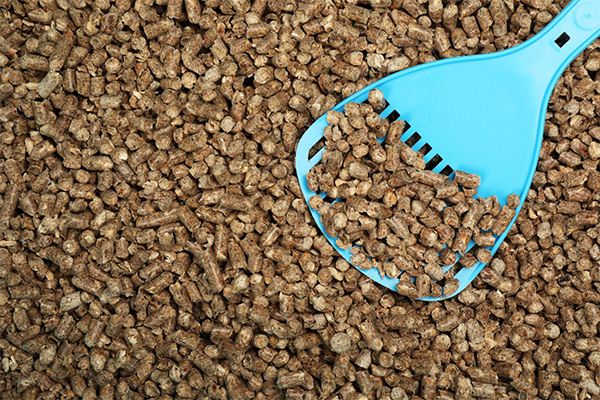
Crafted from pine, cedar, or other woods, this form of litter provides a natural and eco-friendly substitute for conventional cat litters. Its biodegradable composition is particularly appealing to cat owners who prioritize environmental sustainability. Wood litter is often praised for its natural pine or cedar scent, which helps neutralize odors. Furthermore, it boasts a lightweight composition and maintains low dust levels, rendering it suitable for cats and owners with respiratory sensitivities. However, wood litter may not clump as effectively as clumping clay cat litter, potentially complicating waste removal. Additionally, the natural scent of pine litter or cedar litter might not be appealing to all cats, and some types may not control odors as effectively as other litters, requiring more frequent changes.
Corn Cat Litter
Derived from natural corn kernels, this type of cat litter offers a biodegradable and sustainable alternative in the cat litter market. Known for its clumping ability, it facilitates easy waste removal, similar to clumping litter, but with an eco-friendlier approach. Corn litter is typically lightweight and generates minimal dust, making it advantageous for cats with respiratory sensitivities. Additionally, it is renowned for its natural odor-control properties. However, being an organic material, it might be more susceptible to mold growth if not maintained properly. Moreover, there is a potential concern as some cats might be drawn to the texture or scent of the litter, possibly leading to inadvertent ingestion. While generally effective, its odor control may not match some synthetic options, and its cost can be higher than traditional clay litters.
Walnut Shell Litter
Made from ground walnut shells, this walnut litter is an innovative and eco-friendly option in the cat litter market. It's known for its natural clumping litter ability, which aids in easy waste removal, much like clumping clay cat litter, but with the added benefit of being biodegradable. This variety of litter is generally proficient in odor control and tends to minimize tracking outside the litter box. Nevertheless, it's worth noting that walnut shell litter may not be as easily accessible as more conventional options and could come at a higher cost. Some cats might also be allergic to nuts, making them unsuitable for those individuals. Additionally, while it offers good odor control, it may not be as long-lasting as some synthetic alternatives, requiring more frequent changes.
Grass Litter
Grass litter, a newer entrant in the cat litter market, is made from natural grass fibers. It offers an eco-friendly alternative, being biodegradable and renewable. Similar to clumping clay cat litter, grass litter is known for its clumping litter ability, facilitating easy cleanup and efficient waste removal. It's typically lightweight and produces minimal dust, making it suitable for cats and owners with respiratory issues. Grass litter is frequently praised for its effective odor control and its gentle impact on cats' paws. However, its absorbency may not match traditional clay litters, potentially requiring more frequent changes. Additionally, being a natural product, it can vary in consistency, and its cost might be higher compared to more conventional options.
Bamboo Litter
Bamboo cat litter, crafted from the fast-growing and sustainable bamboo plant, offers a unique and eco-conscious choice in the litter market. Like clumping clay cat litter, certain types of bamboo litter can form clumps, easing the process of waste removal while providing a greener alternative. It's known for being lightweight and typically low in dust, which is advantageous for cats and owners with respiratory issues. Bamboo litter is known for its impressive odor control capabilities and alignment with environmentally friendly practices due to its biodegradable nature. Nonetheless, it's important to note that it might not be as readily available as traditional litter and could come with a higher price tag. Additionally, its clumping and absorbency capabilities might not match those of high-quality clay litters, potentially necessitating more frequent litter box maintenance.
Tofu Litter
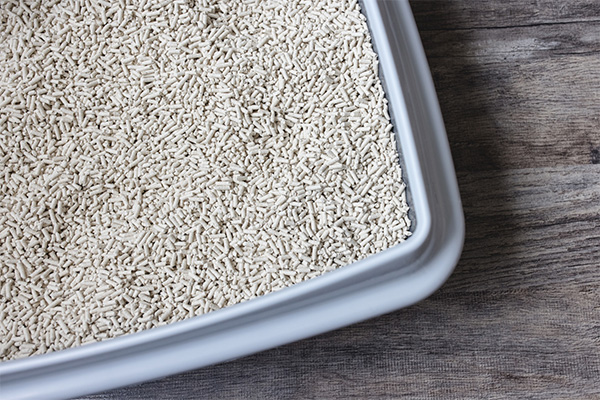
Made from recycled tofu or soybean products, tofu cat litter is an eco-friendly option that has gained popularity for its biodegradable properties. This type of litter is known for its clumping ability, akin to clumping clay litter, which facilitates easy waste removal. It's generally dust-free and soft on cats' paws, making it a suitable choice for sensitive felines. Tofu litter is also praised for its natural odor-control capabilities. Nevertheless, it tends to be pricier than conventional clay litter and may be less readily accessible. Additionally, the organic nature of tofu litter could attract insects or rodents if not stored properly, and it may not suit cats that are allergic to soy products.
Crystal Litter
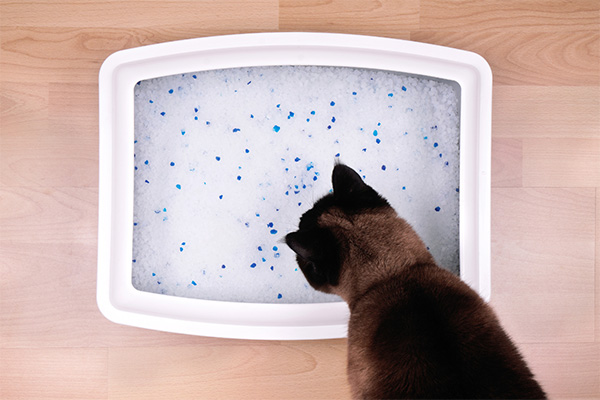
Crystal cat litter, crafted from silica gel crystals, is a unique choice renowned for its outstanding absorbency and effective odor control. Unlike clumping clay litter, crystal litter does not form clumps, but it effectively traps moisture and neutralizes odors. Its high absorbency means it can last longer between changes, offering a potentially more economical long-term option. Crystal litter is also characterized by being low dust and lightweight, making it an ideal choice for cats and owners with respiratory sensitivities. However, its initial cost is typically higher than clay litter. Some cats may find the texture of the crystals less appealing, and it's not biodegradable, which could be a concern for environmentally conscious cat owners.
Peat Moss Litter
Peat moss cat litter, derived from natural peat moss, offers an organic and biodegradable alternative in the cat litter market. This variety of litter is celebrated for its notable absorbency and inherent odor-control capabilities. Like clumping clay litter, some peat moss litters can form clumps, making waste removal easier. It's typically lightweight and produces minimal dust, benefiting cats and owners with respiratory sensitivities. Nonetheless, peat moss litter may not be as easily accessible as more conventional options and might have a higher price tag. Its environmental impact is also a consideration, as peat moss extraction can contribute to habitat destruction and carbon emissions. Additionally, its absorbency and odor control might not match those of high-quality clay or silica litter, potentially necessitating more frequent litter box maintenance.
Paper Pellet Litter
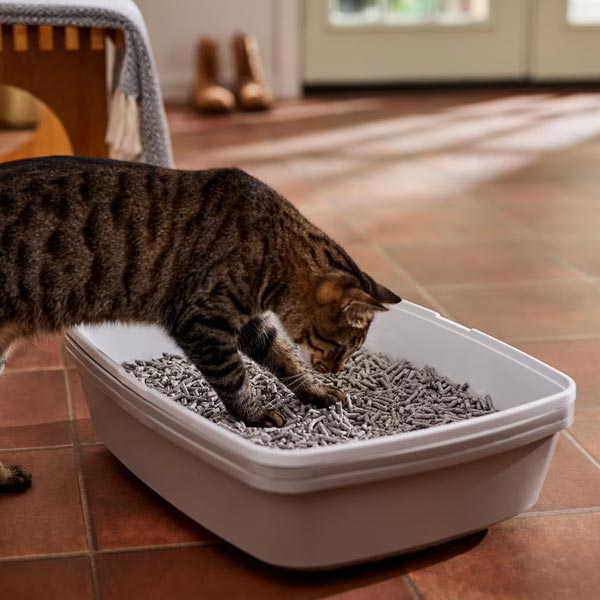
Paper pellet cat litter, crafted from compressed recycled paper, offers an environmentally friendly choice for pet owners. Unlike traditional clay cat litter, paper pellet litter does not form clumps, but it is highly absorbent and effective at controlling odors. It's a particularly suitable option for cats with allergies or sensitivities, as it is virtually dust-free and gentle on paws. The eco-friendly nature of this litter, being biodegradable and made from recycled materials, appeals to environmentally conscious consumers. However, the lack of clumping can make waste removal less convenient, and it may require more frequent changes to maintain cleanliness. While paper pellet litter is effective in odor control, its performance may not match some clumping clay or silica gel litters.
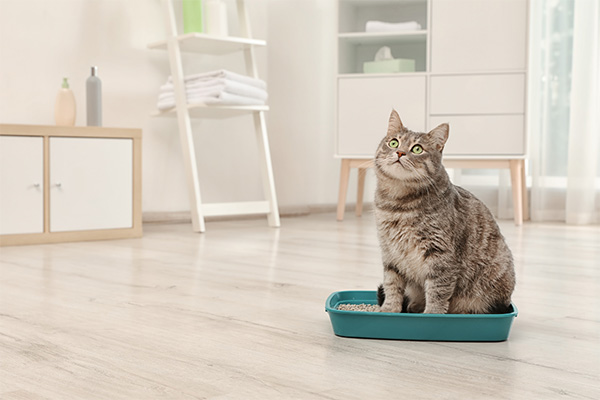
Types of Cat Litter Features To Consider
Clumping Litter
Clumping cat litter, primarily made from bentonite clay, is distinguished by its ability to form tight clumps when exposed to moisture. This clumping action simplifies waste removal, allowing cat owners to easily scoop out urine and feces while leaving the rest of the litter undisturbed. The result is a more hygienic litter box and efficient litter use, as only soiled portions need to be discarded. Clumping litter is also recognized for its effectiveness in controlling odors. However, it's typically heavier than non-clumping alternatives and can produce dust, which may be problematic for cats and owners with respiratory issues. Additionally, it's not biodegradable, posing environmental concerns for those seeking eco-friendly options. The choice of clumping litter often balances convenience in cleaning with considerations for health and sustainability.
Non-Clumping Litter
Non-clumping cat litter, typically made from clay, paper, or wood materials, is designed to absorb moisture without forming clumps. This type of litter is often chosen for its simplicity and cost-effectiveness, as it tends to be less expensive than clumping varieties. Non-clumping litters can effectively control odors and are usually easy to use, requiring a complete change rather than scooping clumps. However, the lack of clumping means that urine can saturate the litter, necessitating more frequent full litter box changes to maintain cleanliness and hygiene. Moreover, non-clumping litters can be dusty, posing a potential concern for cats or owners with respiratory sensitivities. While not as convenient as clumping litter in terms of waste removal, non-clumping litter offers a straightforward and often more affordable solution for cat litter needs.
Scented Cat Litter
Scented cat litter, available in various formulations, including clumping clay, is designed to mask litter box odors with added fragrances. This type of litter is particularly appealing to owners who are sensitive to pet odors and popular in households with multiple cats, as it provides a more pleasant-smelling environment. Depending on the base material used, scented litters can be as effective as their unscented counterparts in clumping and absorbency. However, the added fragrances can be a double-edged sword; while they appeal to human preferences and can help mask over smelly litter boxes, some cats may find the scents overpowering or off-putting, leading to litter box aversion. Additionally, cats with allergies or respiratory issues may react negatively to the added perfumes. The environmental impact of scented litters also varies based on the base material and the nature of the fragrance additives.
Unscented Cat Litter
Unscented cat litter, which can be made from various materials, including clumping clay, is favored by cat owners seeking a more natural litter box experience. Without added fragrances, it's a preferred choice for cats and owners with sensitivities to scents or allergies. Unscented litters focus on the natural odor-absorbing properties of their materials, whether clay, silica, or biodegradable options, to control litter box smells. While unscented litter avoids the potential irritants of artificial fragrances, its effectiveness in odor control relies heavily on the quality and type of the base material. Some unscented litters might not mask odors, and scented varieties require more frequent cleaning and maintenance to ensure a fresh environment. The choice between unscented and scented litter often comes down to the personal preference of the cat and owner, as well as considerations for health and sensitivities.
Dust Free
Dust-free cat litter, available in various forms including clumping and non-clumping, is specifically designed to minimize dust and is a popular type of cat litter among cat parents. This litter is well-suited for cats and individuals with respiratory issues or allergies. It helps minimize airborne particles that could otherwise irritate the lungs and trigger allergic reactions. While dust-free litters provide a cleaner and healthier environment, their effectiveness in other areas, such as odor control and absorbency, depends on the base material used, be it clay, silica, or biodegradable substances. However, some dust-free litters may be more expensive than traditional litters, and the texture or clumping properties might not suit all cats. The choice of dust-free litter often reflects a prioritization of respiratory health and cleanliness in the home.
Low Dust
Low dust cat litter, which can be either clumping or non-clumping, aims to reduce airborne particles, a significant advantage for cats and owners with respiratory sensitivities. This type of litter minimizes the dust that can be stirred up during use and cleaning, promoting a cleaner and healthier environment. While low dust litters are less likely to cause respiratory discomfort or allergies, their effectiveness in odor control and moisture absorption depends on the base materials, such as clay, silica, or natural alternatives. Some low-dust litters may come at a higher price point than regular litter. Additionally, the texture and clumping properties may vary, which can affect the preference of individual cats. Selecting low-dust litter often balances maintaining respiratory health and other litter box management considerations.
Odor Control
Odor control cat litter is specifically formulated to tackle the challenge of litter box smells. This type of litter often contains added ingredients like baking soda, activated charcoal, or proprietary odor neutralizers to absorb and minimize unpleasant odors effectively. Cat owners who prioritize maintaining a fresh-smelling home often opt for odor-control litters, which are widely popular for this purpose. While these litters can be highly effective in masking or eliminating odors, the added chemicals or fragrances may not suit all cats, especially those with sensitivities or allergies. Some odor-control litters may also be more expensive than standard litters. The choice of a control litter often reflects a preference for maintaining a pleasant living environment while balancing the health and comfort needs of the cat.
